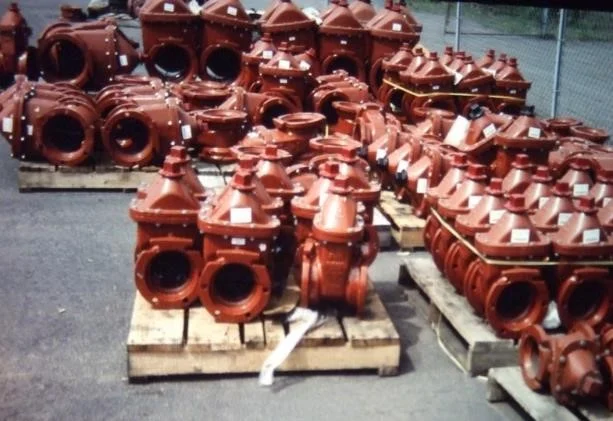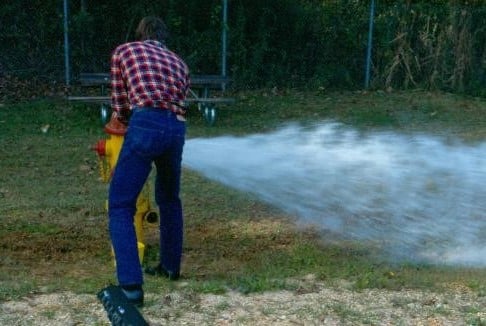Isolation valves are an essential part of water distribution systems. Without them, a single pipe break can shut down an entire system while repairs are performed.
Gate Valves
The most common type of isolation valve is a gate valve. Gate valves are generally intended to be fully open or fully closed. If the goal is
Under normal operating conditions, gate valves are usually intended to be fully open, unless they are serving as pressure zone or district metered area boundaries, in which case they should be fully closed.
However, there are many, many isolation valves out there today that are in the wrong position, and these valves may have been in that position for a long time. Some investigators who do valve testing have reported that the percentage of valves that are not in the correct position is in the double digits. How could that happen? What are the implications, and what can be done about it?
Why is Finding Closed Valves Difficult?
In most modern distribution systems, the pipe network is looped such that if one pipe is closed or throttled, water can find its way to customers through other paths. This is difficult to detect because pipes are generally sized for fire flow or some other peak condition and most of the time, the flow is significantly less. This means that velocity and head loss is low and downstream pressure is reasonable so that no one notices if a single pipe is closed.
There are numerous reasons why pipes can be left closed. Consider a crew working to shut down part of the system to repair a pipe break. It’s 20 degrees F (-7C); it’s 2 am, everyone is tired, cold, and wet. The crew may have had to close 4 valves to obtain the shutdown, but they only need to open 3 to get everyone back in service (or they don’t feel like fully opening the valve, and leave it open just a crack). They believe they’ll come back the next day and open the closed valve(s), but things happen, and the valve stays closed.
Because water use is low in the neighborhood of the closed valve, no one notices the closed valves or the impact it has on pressure. No one notices until there is a fire, and hydrants that were supposed to deliver 1000 gpm (60 L/s), are now providing 400 gpm (25 L/s). Fire fighters are angry, property loss is excessive, and loss of lives is possible.
In transmission mains, the extra head loss when water needs to get around a closed valve can increase pump energy costs. If two pipes serve an area but only a single pipe is open, the flow through that pipe doubles and the head loss increases by a factor of 4. (Head loss is a function roughly of velocity squared.)
How can Closed Valves be found?
How can closed valves be detected and corrected? The best way is through a valve exercising program. With valve exercising, every valve is opened and close every year (or two years or …). The primary purpose is to reduce corrosion of the operating mechanism. Other purposes are to help operators be able to find valves when needed, identify valves that are inoperable or paved over, and identify and correct valves that are in the wrong position.
But not all water utilities have annual valve exercising programs. It is one of the easiest programs to cut when budgets are tight because no one will notice (at least for a while) that a valve is in the wrong position.
Using a Hydraulic Model to Find Closed Valves
Closed valves can also be found during fire hydrant flow tests when conducted either for fire insurance purposes but even more importantly, for water distribution model calibration. If the hydraulic model predicts 1000 gpm at 20 psi residual pressure, but the actual flow is 400 gpm, something is wrong. It could be a modeling error but, more likely than not, it could be a closed valve.

But in other cases, it’s not as obvious. The team can rerun the hydrant flow test, but this time with multiple residual hydrants. Converting the residual pressure readings into hydraulic grade line (HGL) values can paint a picture of where head loss is excessive in the system. An abrupt drop in the HGL between two residual hydrants can point to an area where the closed valve is located.
At the next level, the Darwin Calibrator tool in WaterGEMS can help the modeler find the closed valve. Rather than relying on the modeler’s intuition and experience to find the valves, it can use genetic algorithms to search logically for the potentially closed valves by repeatedly closing different valves until the model results match field data. The image below shows the pipe where Darwin thinks the pipe is closed.

Summary
Gate Valves are essential, but they need to be in the right position. WaterGEMS can help find the bad actor(s).
Want to learn more from our resident water and wastewater expert? Join the Dr. Tom Walski Newsletter today!











